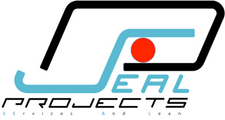Need an Expert?
Leaning processes
Based on our baseline project-approach, and assuming (in this outline) the process to be leaned has been identified, we first identify the stakeholders along the process, and together we lay out the foundation for the project.
We have a structural and systematic approach to leaning a process, containing following steps;
- During workshops, the as-is process is mapped out in a process map, in its entirety, visualising the process-steps. In following workshops, in a methodical and systematic way, the issues, problems, and all other types of Lean wastes are identified.
- Future State identification. With our wastes overview, and taking everything into consideration that may impact the project, we carefully select which improvements we aim for. Rome wasn’t built in a day, so in this case it means we shall prioritise our improvement challenges.
- The actual implementation is carefully planned – not forsaking the essentials in communication and change management. At this stage, we now have clearly defined deliverables, and we know in which sequence to introduce them, and we know which profiles are to enable this, we can make a planning. A reliable one. A planning, which can be seen as a commitment. This plan provides ease-of-mind, for all concerned. You might even see it as part of ‘expectations management’. This plan is key, both for those who are to actively contribute in the actual implementation, as for all other stakeholders whom need predictability.
- Get the deliverables created, tested, fine tuned wherever needed, get people on the floor appropriately trained prior to a GoLive.
- This is where introduce end-to-end process management. A bare necessity. We have developed a methodology aimed at ensuring that the process management dashboard shows only relevant information, with clear and easy-to-use KPIs.
Comment: We always start out in tandem formation: your people and our consultant. In the first stages the consultant takes the lead and gradually over time (as the project progresses) your people take over the lead in incremental steps. Every project has an end. Lean does not. Lean knowledge, therefore, must be passed on to your people. Our consultant does this continuously, with pleasure, because he is passionate about Lean, and managing projects to implement Lean.
Copyright © All Rights Reserved
Follow Us
